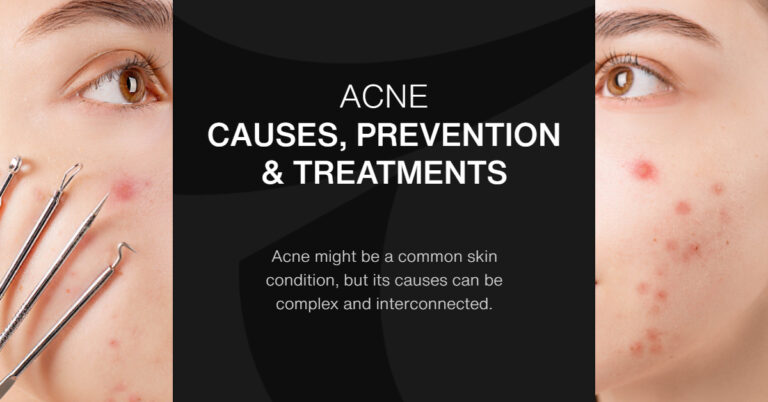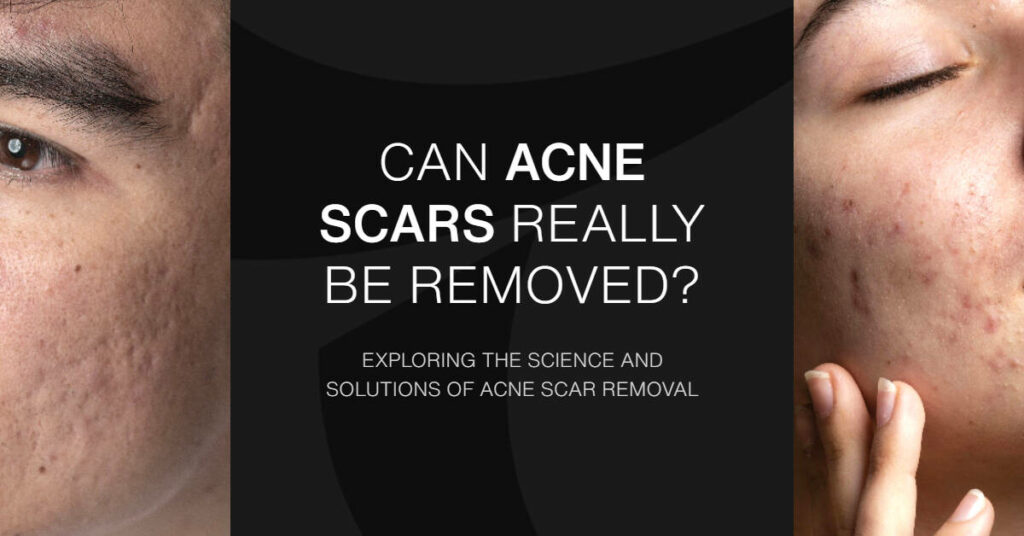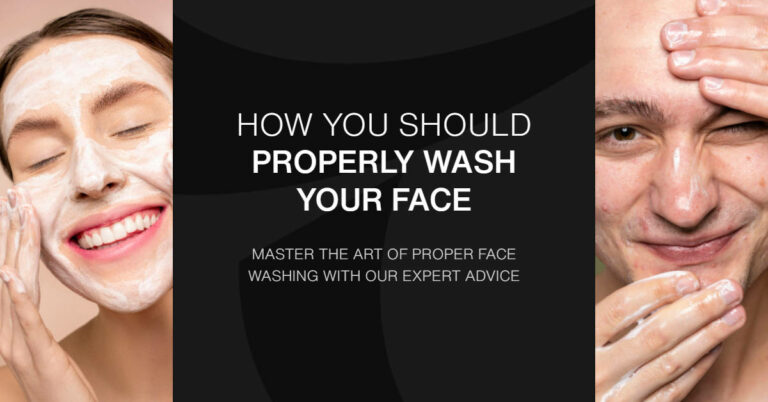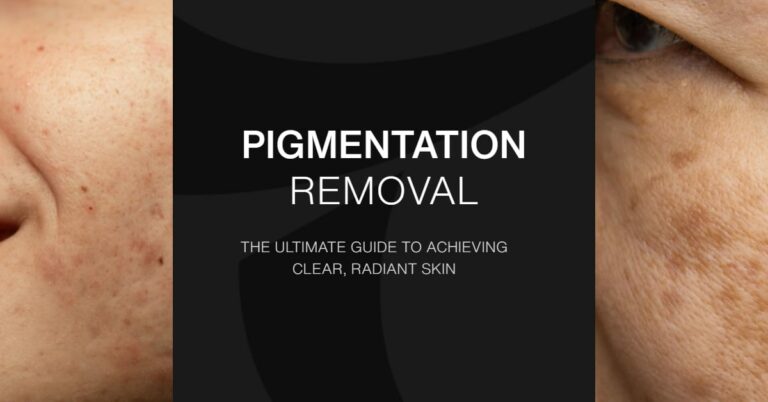

Can Acne Scars Really Be Removed?
- CoslabBeautySpa
- September 22, 2023
Table of Contents
Acne scar removal is often a pressing concern for those who have battled past skin issues, as acne scars can often feel like an unwelcome souvenir from past skin struggles; leaving us wondering if they can ever truly be erased. Thankfully, advancements in dermatology and skincare have introduced various methods that hold the promise of reducing, if not eliminating, the appearance of acne scars. Let’s deep dive into the causes, types, skincare, and treatments for all types of acne scar removal.
Causes of Acne Scars
The best treatment is prevention, so here are some common causes of acne scarring so you know how to prevent or minimize the appearance of scars.
The process of repairing acne includes the production of collagen fibers. Overproduction of collagen may result in raised bumps. Other acne scar types could be caused by the loss of tissue, which creates pits or indentations in the skin.
Picking or popping acne, a common habit, can exacerbate scarring. When we engage in such actions, we inadvertently introduce additional trauma to the skin, increasing the likelihood of scar formation leading to acne marks.
External factors like pollution and sun exposure can exacerbate acne scarring as well.
Treating acne scars may take a lot of healing time and patience but using combination treatment like targeted skincare and relevant treatments can effectively reduce acne scars, improving your overall skin quality.
Types of Acne Scars
There is a wide range of acne marks, they commonly manifest as a red or brown spot after the pimple has subsided. Not all types of acne scarring are created equal, and understanding the different types of scars is essential in removing or minimizing them:
Atrophic Scars:
Atrophic scars are also known as depressed acne scars. Depressed acne scars occur due to a loss of tissue that happens during the healing process of acne.
- Ice pick Scars Ice pick scars mirror the tool’s design. The surface indentation is wide at the top and narrows to a point within the deeper layers of the skin. These deeper scars are extremely common yet they are one of the most challenging scars to heal. Pitted scars like these tend to appear on the forehead and upper cheeks, where the skin is thinner.
- Rolling Scars Rolling scars have sloping edges that give off the appearance of sunken, uneven skin texture. These shallow scars are typically found on the lower cheeks and jaw, where the skin is thicker.
- Boxcar Acne Scars Boxcar scars are indentations that have sharper edges. Those edges go down deep into the skin giving off a sunken appearance. These deep scars are usually found on the lower cheeks and jaw.
Hypertrophic Scars:
When there is excessive collagen growth in the healing process, lesions of scar tissue may grow into a raised portion of the skin. This forms hypertrophic scars which are usually found on the jawline, chest, back, and shoulders. They can be itchy, tender, and painful.
Keloid Scars:
Keloidal scars usually take some time to appear but once it begins, the excessive collagen production accumulates into acne scar tissue that extend beyond the original blemish site. Keloid scarring is most commonly found on the chest, shoulders, earlobes, and cheeks.
Effective At-Home Acne Scar Treatments
While not all scars may vanish completely, certain ingredients in skincare products can greatly improve the appearance of acne scarring, especially mild acne scars, such as:
Alpha hydroxy acids (AHAs)
AHAs exfoliate the skin, removing dead skin cells which in turn help lighten any dark spots and hyperpigmentation from acne scarring. This also helps loosen and clean out clogged and enlarged pores preventing future acne outbreaks.
Lactic Acid
Lactic acid is a type of AHA that acts like a gentle peel removing dead skin cells, lightening and minimizing the appearance of pimple scars. It also works to smooth out rough skin texture and uneven scar tissue.
Salicylic acid (BHAs)
Salicylic acid helps break down the outer layer of skin, accelerating the cell turnover rate. This in turn lightens dark acne marks minimizing the appearance of acne scars.
Mild acne scars may be improved or completely healed using topical medication and skincare products containing the above ingredients. Deep acne scars may need more intensive forms of acne scar treatments.
Effective Treatments for Acne Scarring
For those dealing with more severe or deep acne scarring, advanced acne scar removal treatments offer hope for achieving smoother and clearer skin. Acne treatments differ depending on the type of scars you suffer from. Here are some common types of acne scar treatment options:
Chemical Peels
Chemical peels remove the outer layer of old skin. By removing the dead skin cells on the top layer, the new layer of skin that grows will be smoother and more radiant. Chemical peels are usually more effective at improving atrophic scar types.
Laser Treatment
Laser treatment is a non-surgical procedure involving the use of focused light on the top layers of damaged skin to break up the tissue of pimple scars. This encourages healthier skin to the surface with smoother skin texture and reduced appearance of pore size. This light therapy may not get rid of all the acne scarring but it will improve their appearance.
This may not be a suitable treatment if you have active acne breakouts, cystic acne, darker skin tones, or very wrinkled skin.
Dermal Fillers
Dermal fillers are injected into depressed scars to elevate them, giving off the appearance of smoother skin texture. However, this is a costly procedure and results may vary based on your skin type, skin condition, and lifestyle. They are also not long-lasting and will need regular appointments to maintain them.
Microneedling
Microneedling involves the use of small needles to purposefully injure the skin surface to stimulate collagen production and boost new cell growth that can smooth out scars and improve your skin condition. It also helps to refine enlarged pores and clear out impurities from the skin, preventing future acne breakouts
More frequent and regular treatment sessions will be required if you have more severe acne scarring for optimal results. Ultimately, the results of these treatments depend on factors like the severity of your scars, your current skin condition, and your lifestyle.
We recognize the trouble acne sufferers face, managing both active acne and its lingering scars. Our Acne Facial Treatment embraces this, offering a streamlined solution that targets both concerns with minimal downtime. Our treatment seamlessly fits into your routine with minimal downtime of only 1 to 2 days, empowering you to regain confidence in your skin’s appearance.
For those seeking a deeper transformation, the addition of our Needle Sponge Treatment boosts the skin’s natural healing process, with 3 to 5 days of downtime where you may experience mild peeling.
The fusion of effective, efficient care and minimal disruption makes our approach seamless in your quest for vibrant, scar-free skin. Embrace the possibilities, and step confidently towards a future defined by your radiant, unblemished complexion.
- Tags: acids, Acne, acne scars, scars, Sebum
Share Article
Related Articles
Like This Article?
Subscribe to our newsletter to get the latest insider updates, news and insights. No spams. We promise.
You Might Also Like


How You Should Properly Wash Your Face: Steps You Should Never Skip

